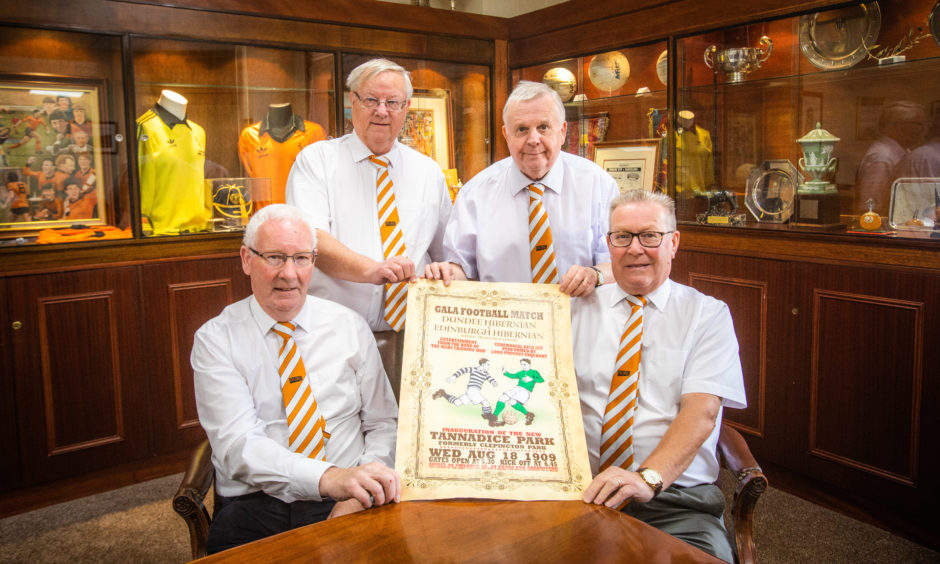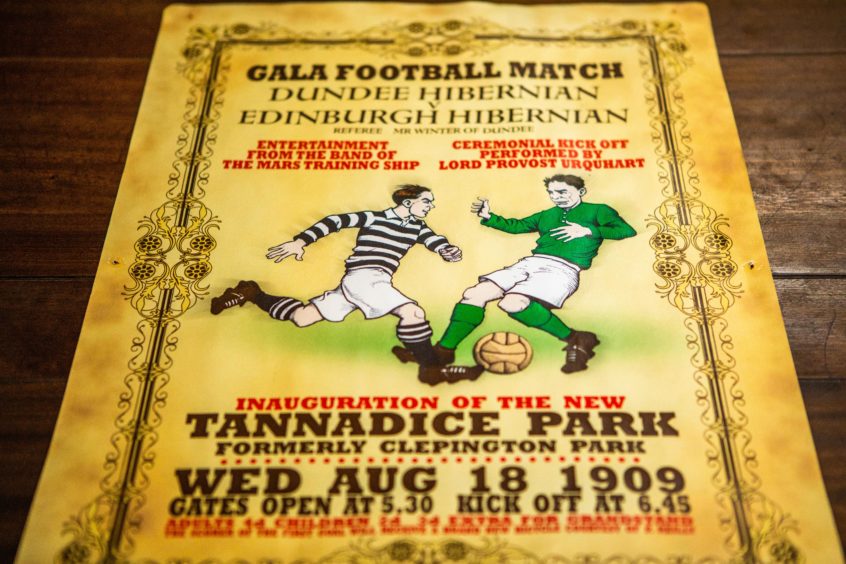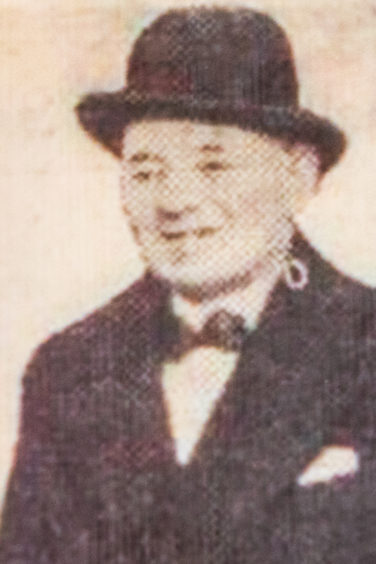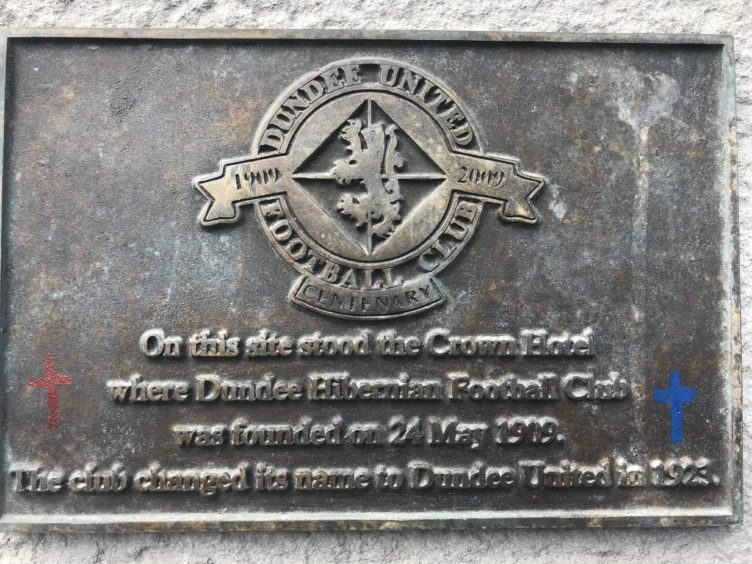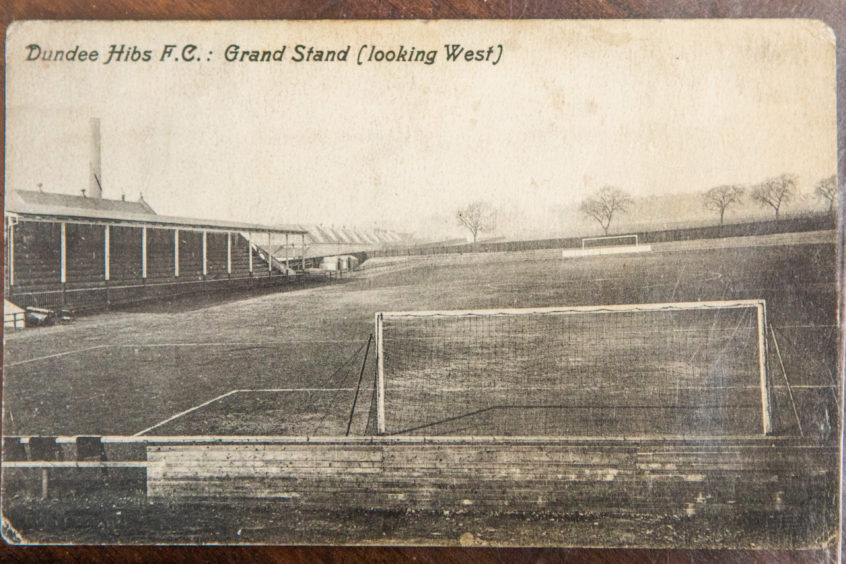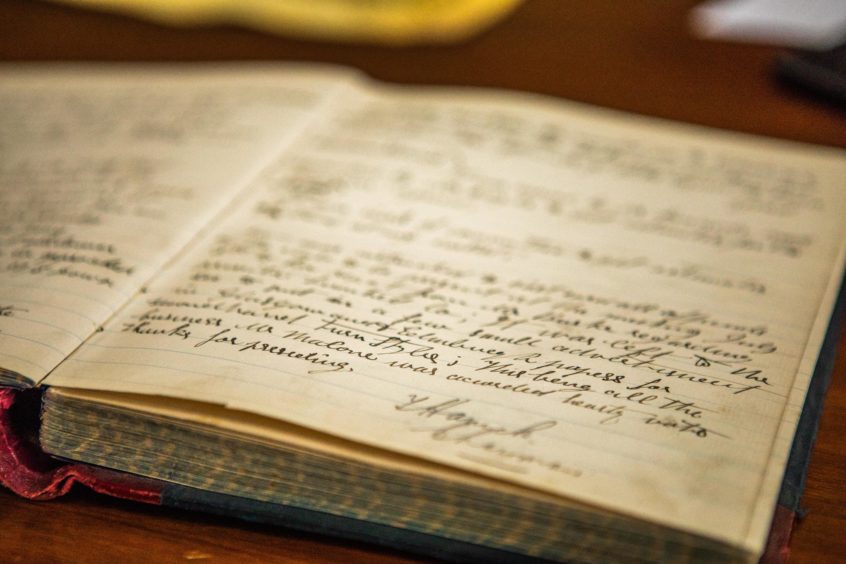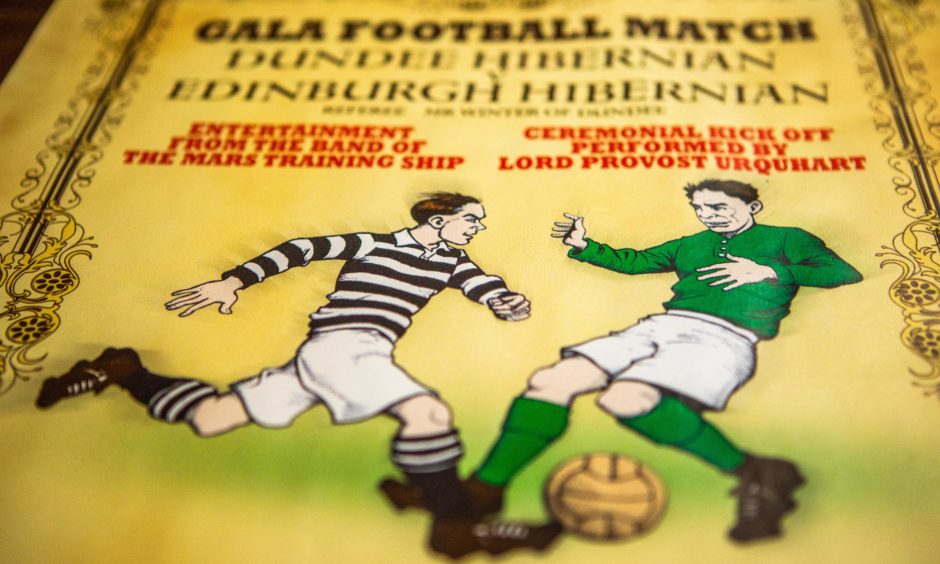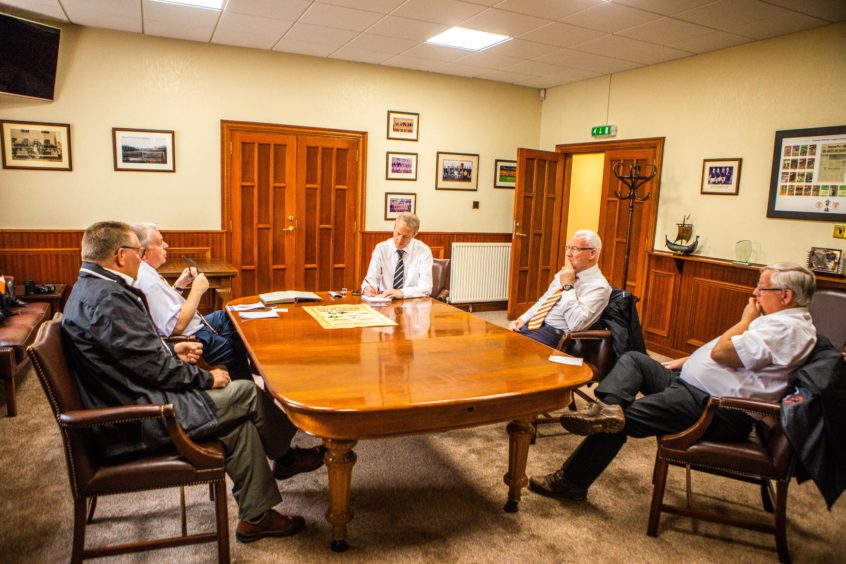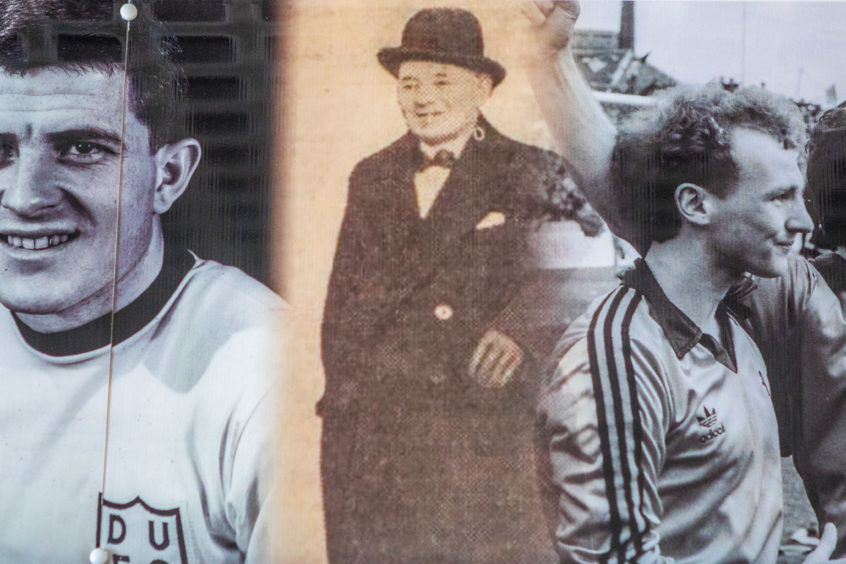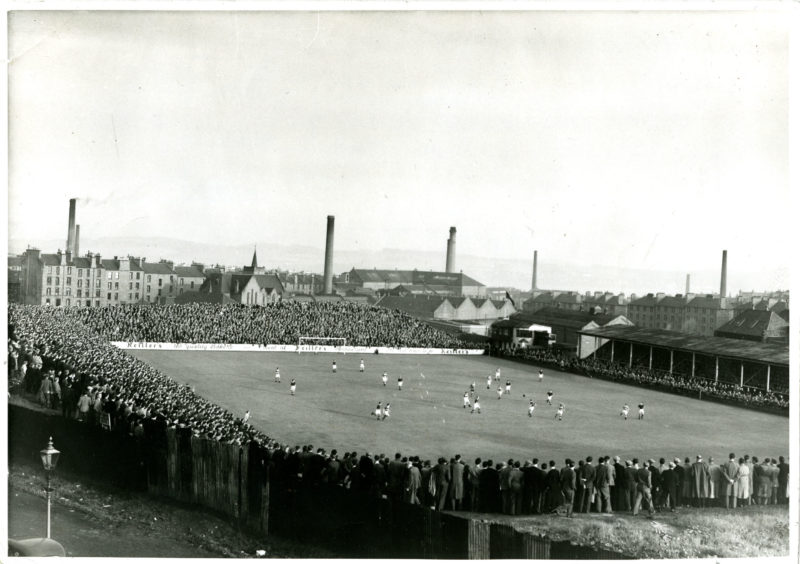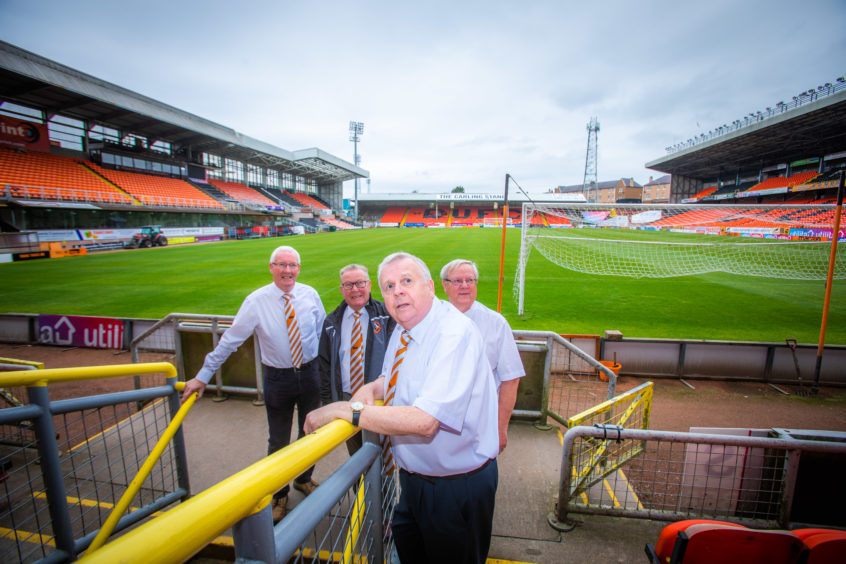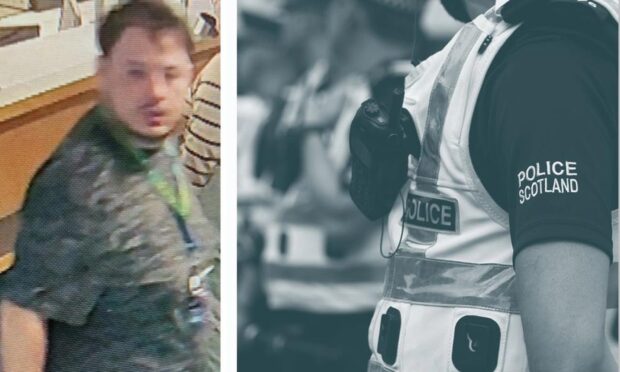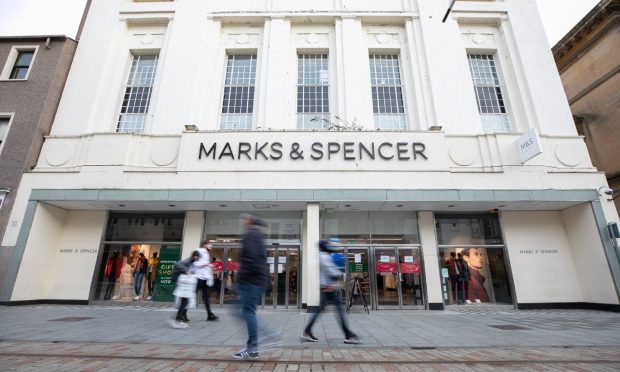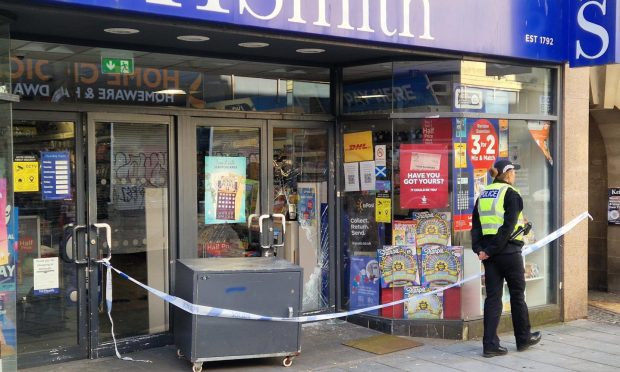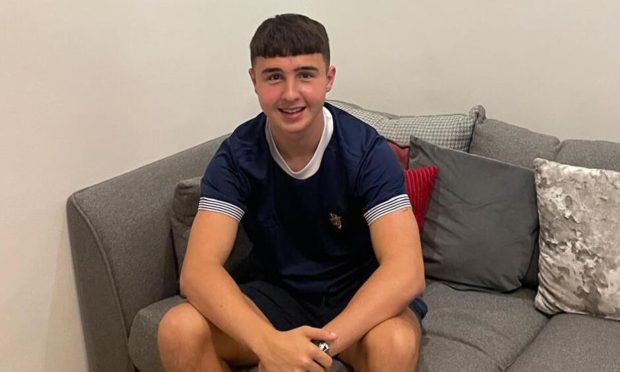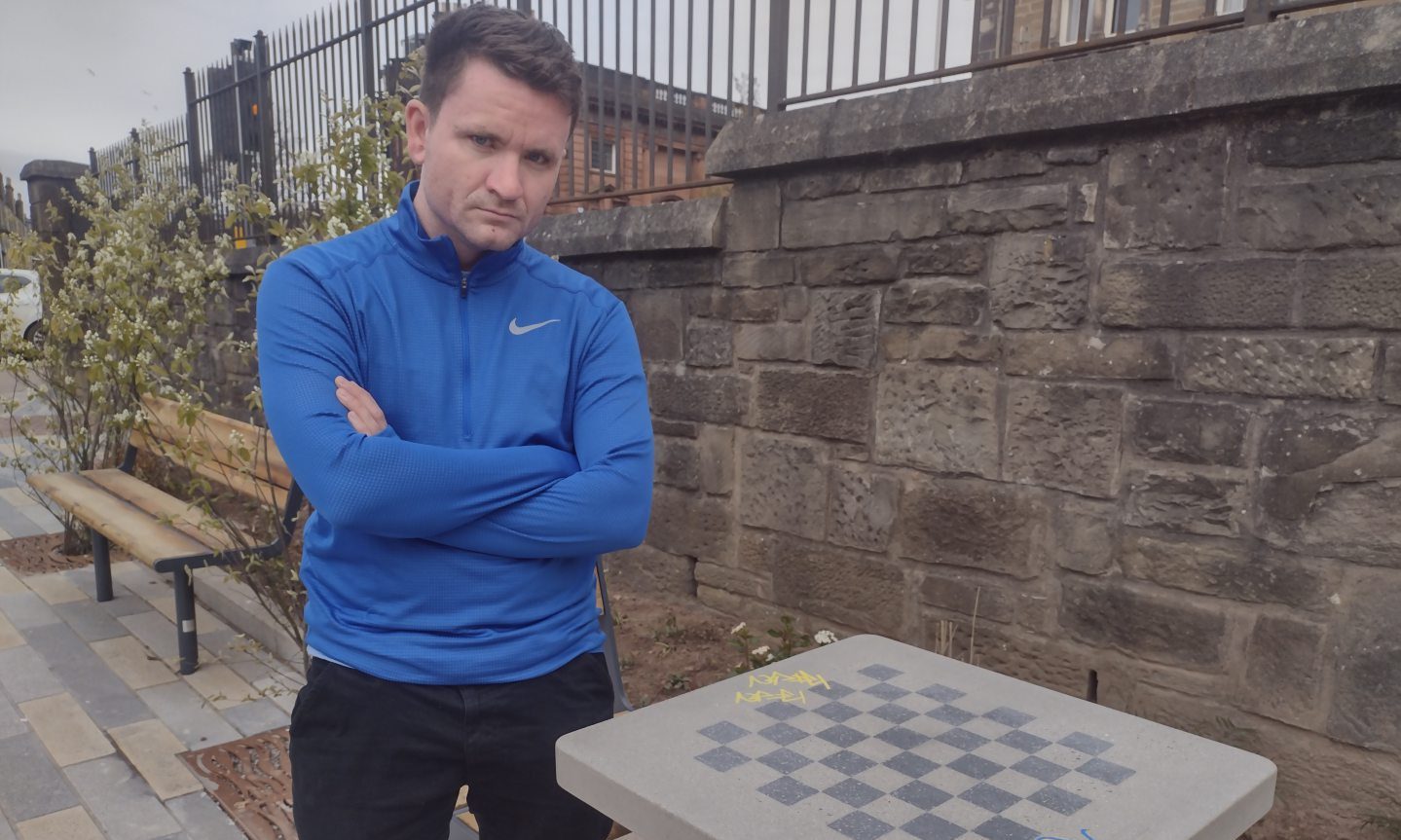Dundee United’s origins can be traced to Dundee Hibernian’s inaugural game at Tannadice 110 years ago this weekend. Michael Alexander reports.
It was an occasion advertised rather grandly as a Gala Football Match, with pre-match entertainment provided by the band from the Mars training ship for dissolute children that had been a local landmark anchored on the nearby River Tay since 1869.
Exactly 110 years ago, at the start of the 1909/10 football season, Edinburgh Hibernian travelled to Tayside to play a friendly match against the recently formed Dundee Hibernian (later renamed Dundee United).
The match, which was the home side’s first ever fixture, took place on the evening of Wednesday August 18, 1909, to officially inaugurate the newly named Tannadice Park (previously Clepington Park).
With adults charged 4d and children 2d to get in, a 7000 crowd, drawn mainly from the city’s 40,000-strong Irish community, watched Lord Provost Sir James Urquhart perform a ceremonial kick-off as the referee – a Mr Winter from Dundee – got the match underway.
Dundee Hibs secretary Pat Reilly had offered the first goal scorer the prize of a bicycle from his shop in Perth Road.
This went to wing-half John O’Hara of Edinburgh Hibs who scored the opener while Jamie Docherty of Dundee Hibs was presented with a gold medal for his equaliser which was the new club’s first ever goal. The game finished 1-1.
But as Tom Cairns, the volunteer chairman of Dundee United Business Club explains, it was touch and go as to whether Tannadice Park would be ready for that first ever game at all after the previous leaseholders took umbrage with the manner of their departure and literally removed everything apart from the grass!
“In March of 1909 it was announced that a committee had been formed by the Irish community in Dundee with the intention of forming a football club,” said the life-long Dundee United supporter in an exclusive interview with The Courier at Tannadice.
“The Dundee Hibernian Football and Athletic Company came into being in late March 1909.
“Pat Reilly was elected secretary, Baillie Tom Hannick became president, Samuel Johnstone was vice president, Thomas Timmons was treasurer and the committee was made up of Patrick Doyle. Thomas Heraughty, James Glover, John Kennedy, Thomas Malone and John Naulty.
“The Dundee population at that time numbered around 160,000 including around 40,000 Irish – most of whom were connected to work within the many jute factories within the area.
“The new football club needed a ground on which to play and seemingly approached the owners of Clepington Park on Tannadice Street who at that time leased the ground to Dundee Wanderers and obviously outbid the other club.
“Dundee Hibs were granted the lease. But this was much to the displeasure of Dundee Wanderers who, as they left the ground, removed everything except the grass.
“Dundee Hibs therefore had to provide a pavilion, grandstand, fencing and turnstiles etc within a very short time. They were even buying turnstiles just a couple of days before the inaugural match. They cost £9 each but with a 5% discount if paid for in cash!”
Fascinating details of the club’s early foundations are detailed in the original minute book, which Mr Cairns, and other members of the Dundee United Business Club, showed The Courier.
Formed following the earlier demise of Dundee Harp FC at a time when Dundee FC – established in 1893 – was drawing crowds of around 10,000 down the road at Dens Park, the Dundee Hibernian committee met weekly in the Wallace Rooms in the Vault, which in later years was demolished to make way for Dundee City Square.
Interestingly, although the game was advertised to kick off at 6.45pm, it stated in the minutes that it would “probably kick off at 6.30pm”.
With both clubs registering similar dark green colours, Edinburgh Hibernian took to the field wearing borrowed black and white hooped jerseys with Dundee Hibs in green.
“Temperance refreshments” were served after the game with “tea supplied to the Edinburgh Hibs party”, whose expenses amounted to a princely £8, one shilling and nine pence.
The Tannadice boardroom features the rare photograph of the ground as it was 110 years ago when it was situated in what was then largely open countryside on the outskirts of the city.
Several minor sides had used the park since the 1870s. Records show the purpose-built Tannadice grandstand, which was in use until 1960, cost £323.
But when the club applied to join the Scottish League on May 25 1909 – just a day after the club was formed – their application was rejected on the grounds that they were not fully established with facilities or players.
On June 12 1909 they were welcomed into the Northern League instead alongside Brechin City, Dundee Wanderers, Forfar Athletic, Montrose and the Aberdeen and Dundee FC reserve teams.
By May 1910, however, Pat Reilly was writing to all Scottish clubs asking for their support for membership of Scottish League Division Two.
He advised that Tannadice consisted of a “pavilion with excellent dressing rooms, hot and cold running water, a grandstand holding 1200 supporters and that Tannadice Park could hold 15,000 – 20,000 spectators.”
It did the trick because the club was admitted to Scottish League Division Two for season 1910/11. And to complete their exciting first ever season, the “Irishmen” or “The Greens”, as Dundee Hibernian became known, won the local Carrie Cup.
A second surviving minute book held at Tannadice shows how, after the upheaval of the First World War, the club was saved from going out of business in October 1923 by a group of Dundee businessmen who wanted to appeal to a wider audience than the Irish Catholic community.
After the suggested name Dundee City was objected to by long standing city rivals Dundee FC, they decided upon the name Dundee United which is familiar today and, at that time, changed the club colours to black and white before adopting tangerine and black in 1969.
Mr Cairns added: “Pat Reilly and the original founders of Dundee Hibs could never have imagined the journey the club would embark upon in the decades that followed. There have been ups and downs of course.
“But for Dundee United to bring back the league and Scottish cups and the premier league title to this ground and to have played European football here – it really is a fantastic rags to riches tale.”
